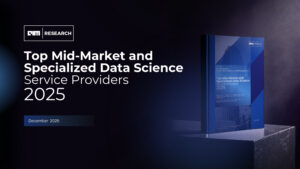

Choosing the right vector database can be challenging for organizations due to the complex nature of unstructured data, varying use cases, the need for specialized algorithms, and the rapid advancements in database technologies, making it crucial to carefully evaluate and select the database that best meets their specific requirements.
Traditional databases have long been the go-to solution for managing structured data, providing reliable methods for organizing and querying information. However, with the advent of new technologies and the increasing demand for handling complex data types, such as images, audio, and natural language, the limitations of traditional databases have become apparent.
Enter vector database, a revolutionary approach to data management that addresses the shortcomings of traditional databases when it comes to handling high-dimensional, unstructured data. Unlike traditional databases, which primarily rely on fixed schemas and predefined relationships between entities, vector databases are designed to handle vast amounts of vector-based data efficiently.
But, choosing the right vector database can be challenging for organizations due to the complex nature of unstructured data, varying use cases, the need for specialized algorithms, and the rapid advancements in database technologies, making it crucial to carefully evaluate and select the database that best meets their specific requirements.
Here is a complete roadmap that can help organizations make the right choice:

$1,299.00





